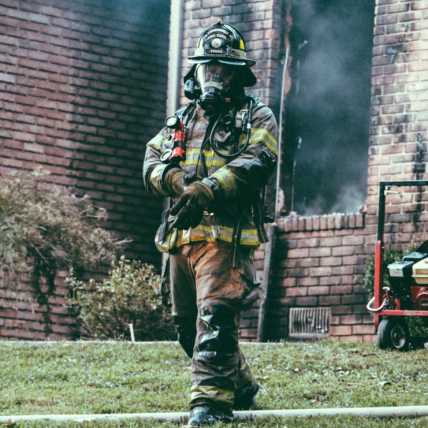Mitigation Reduces The Risk Of Fire Damages

Home insurance provides some peace of mind and financial security for families. However, fire prevention should still be a priority. Fire-resistant features can provide discounts on home insurance and may help offset the costs of purchasing and installing them.
There are several helpful mitigation steps for homeowners to take. The following are some of the top examples:
- Use fire-resistant features throughout your home and especially on the roof.
- Clear a safety zone between 200 and 500 feet around your home that is free of leaves, brush, trees and debris.
- Keep all fuel or propane tanks at least 30 feet away from home and any outlying structures.
- Test fire extinguishers and smoke alarms regularly to ensure functionality.
- If there is no hydrant nearby, buy a water storage tank with a hose that will reach the entire property.
- Ensure that any entrance road is easy to access at all times.
- Be sure that the home address is visible on the front entrance of the property and not just on the home itself.
- Review your insurance policy regularly to make sure that all new items are covered in the event of a fire.
Many Americans may not require additional insurance specifically for wildfires since they are covered under normal provisions for fire damage. The type of insurance needed depends on the type of building or home, the contents of the property and whether the homeowner runs a business out of the home. Construction materials used in building the home and the distance to the nearest fire hydrant are also concerns of insurance companies, as homes that are within 100 feet of a fire hydrant are considered less of a risk. Read a home insurance policy thoroughly to learn more, and discuss any concerns with an agent.
It is also important to know what type of policy is in place. If the policy is an actual cash value policy, it only covers the actual worth of the property at the time of the damage. The deductible is subtracted from that amount. However, replacement cost policies pay the actual cash value aside from the deductible. When the property is replaced, the homeowner pays the difference between the two amounts. Keep in mind that the cost of cleanup is also an issue, and this should be factored in with the policy's provisions.
Review individual coverage limits each year to keep an inventory updated as additional policies may be required. For example, people who buy expensive jewelry, art and firearms need separate insurance policies for these valuable items. Also, be sure that the policy limit for the home or property is in accordance with construction costs if it must be rebuilt. When discussing new insurance needs with an agent, be sure to provide plenty of information. Save receipts for big-ticket items such as expensive televisions, computers, furniture and similar purchases. Always be sure to understand the terms and limitations of the insurance contract thoroughly before signing. This will help prevent any confusion in the future. To learn more, discuss concerns with an agent.

March 19, 2017
by
Anna Lee
Insurance Advisor

